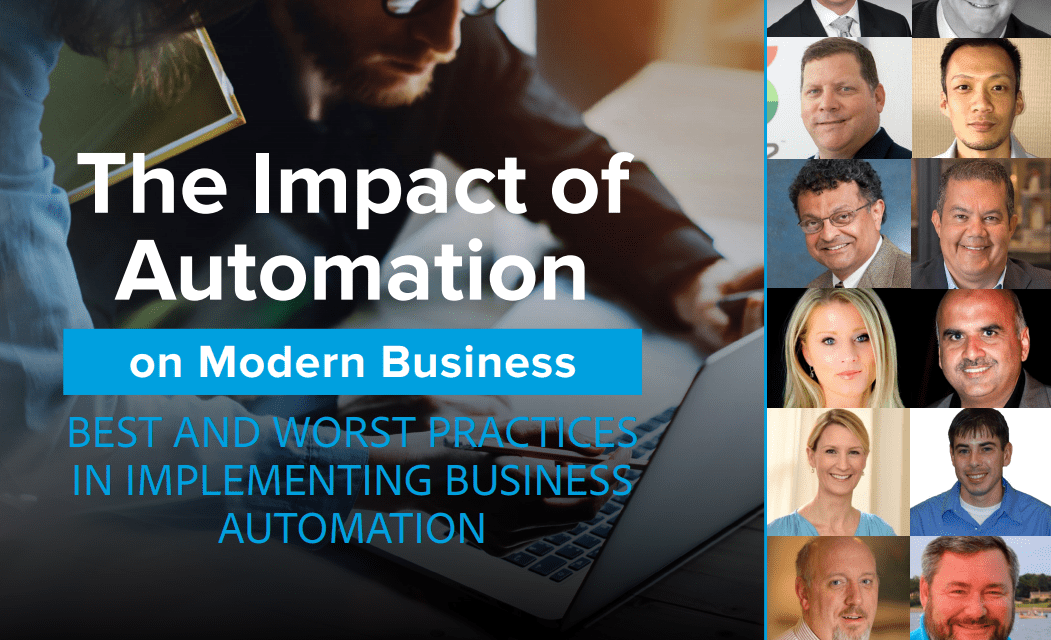The book includes insights from the following experts:
- Gary Tully, Gilead Sciences, Global Head of Legal Operations, People And Design Are Key To Automation >>
- Jay Hemmady, OIA GLOBAL, Chief Information Officer (CIO), The Secrets To Business Automation Success—And Failure >>
- Deborah Fritz, Acxiom, Sr. Director, Global Head of Sales Operations, Business Automation Requires Effective Change Management >>
- Sherif Mityas, TGI Fridays, Chief Information Officer & Strategy, Serving Up Change While Strengthening The Brand >>
- Kevin Price, GE Appliances, a Haier Company, Principal Infrastructure Engineer- Information Security, Automation Frees Up It To Focus On Operational Needs >>
- Ed Rybicki, Mérieux NutriSciences, Global Chief Information Officer, Measure Automation Success In Terms Of Total Business Value >>
The Impact of Automation on Modern Automation was generously sponsored by CA Technologies.
There’s no turning back from the fact that disruptive business automation is here. As artificially intelligent functionality delivers more capabilities that we increasingly take for granted, it’s difficult to grasp all the implications of this transformation. In this eBook, we aim to illustrate what it means for business, for the people who work in those businesses, and for people served by those businesses every day.
To better understand how automation is changing business, and with the generous support of CA Technologies, we reached out to 39 experts. After many fascinating discussions on this topic, we developed essays that address four key questions:
• How has business automation changed your operations?
• What business processes would you like to automate?
• What best practices can you offer to someone who is implementing a large automation project?
• What does the future hold for businesses actively pursuing automation?
In speaking with experts from different industries in both the public and private sectors, it became clear that cost reduction and gains in efficiency are not the only factors that drive automation. They may not even be the most important ones. Successful automation must also deliver greater value in the form of more accurate processes, better products and services, or entirely new value propositions not previously possible.
By providing practical insights into what is happening today and what may be just over the horizon, I believe this eBook will be a valuable resource for anyone planning an automation strategy



